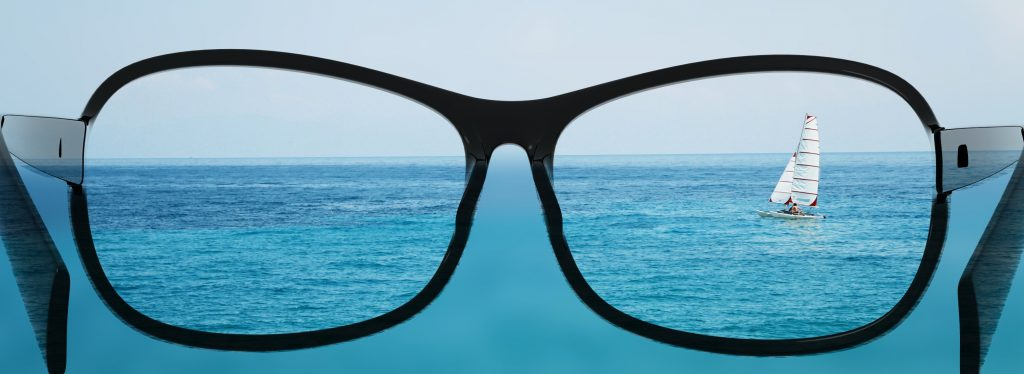Reading Glasses, LASIK, and Near Vision Correction- What are my Options?
Sub Title

When it comes to vision correction surgery, what are you options? Dr. Paul Dougherty explains monovision.
Despite a common misconception, all three types of surgery (LASIK/PRK, ICL, and lensectomy IOL) can be performed in a way that maintains or creates reading vision for patients over age forty. This is done with a technique called monovision (blended vision), where one eye is corrected (or left untouched) as a distance eye and the other eye is corrected (or left untouched) as a reading eye.
When we set the eyes for monovision, the dominant eye is set for distance and the non-dominant eye is set for near. While the majority of patients are right eye dominant, you can identify your dominant eye by asking yourself: Which eye would you hold a camera up to? The eye you would choose is your dominant eye.
Monovision can give you long distance and short distance!
The ability to “accept” monovision is a brain phenomenon. The brain pays attention to the distance eye for distance tasks and the near eye for near tasks. The main benefit of monovision is the ability to see distance, intermediate and/or near without having to resort to using glasses.
Patients who have successfully worn monovision in contact lenses are excellent candidates for monovision after surgical vision correction.
Should you opt for monovision? At your initial consultation, we will demonstrate monovision for you with a pair of trial glasses and give you the opportunity to walk around the office and look at distance, intermediate (computer), and near (reading) targets. Those who adapt to monovision tend to do so very quickly and only require a few minutes to adjust.
The last option for maintaining reading vision after vision surgery is with a lens exchange surgery featuring a presbyopic IOL. This surgery is usually reserved for patients over forty-five to fifty that may have early cataracts, but it can also be done in patients who have no cataracts.
The natural lens of the eye, which becomes less flexible as you age, is replaced with a new lens which flexes (accommodates) to enhance near vision or a multi-focal lens to see distance and near at the same time.
Unlike monovision, both eyes are set the same, and flex equally during the near effort. These lenses are very effective at giving good distance and intermediate vision without glasses following surgery. However, in many patients with these near-enhanced IOLs, part-time reading glasses for fine print and in low light conditions will almost always be necessary, unless partial monovision is employed. The multifocal lenses are more effective at eliminating the need for reading glasses in most situations.
When it comes to problems with reading, multifocal lenses are the way to go.
Unlike monovision, both eyes are set the same, and flex equally during the near effort. These lenses are very effective at giving good distance and intermediate vision without glasses following surgery. However, in many patients with these near-enhanced IOLs, part-time reading glasses for fine print and in low light conditions will almost always be necessary, unless partial monovision is employed. The multifocal lenses are more effective at eliminating the need for reading glasses in most situations.
Dougherty Laser Vision can help you determine the best option to reduce dependency on reading glasses based on your individual visual needs. Contact us today to set up your consultation with Dr. Paul Dougherty, The Doctor’s Doctor at 805-870-9482.

